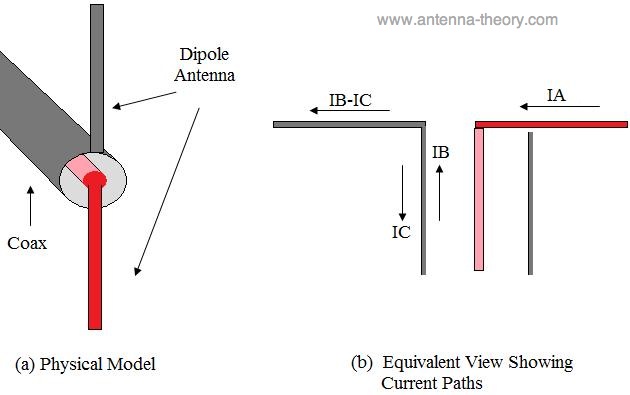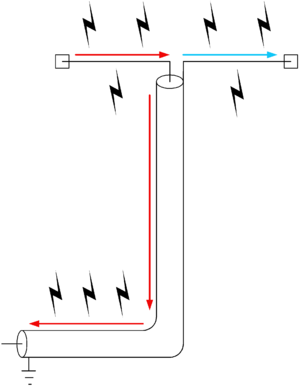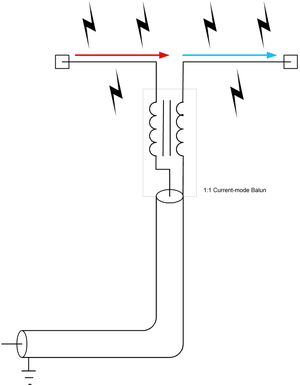A dipole is a particular machine for creating EM fields. The idea is to set up a voltage between the two halves of the dipole in such a way that an EM field is created and efficiently radiated away.
Remember, voltage is a difference between two things. When we consider just an dipole, with no feedline or anything else around it, it's very simple to see that the dipole is symmetrical. The currents in one leg create voltages against the other leg, because there's nothing else.
If we feed the dipole with twin-lead, it's still easy to see how the dipole can be symmetrical. Each leg is now working against the feedline, but since both leads of the feedline are very close to each other, they are affected equally by whatever the antenna is doing, and there is no net effect. Of course, everything else (the Earth, trees, gutters, towers, etc) around the antenna would also need to be symmetrical, and this is unrealistic.
If we feed the dipole with coax, the situation is very different. The shield intercepts any EM fields, effectively hiding the center conductor from any external fields. You don't have a symmetrical arrangement anymore: one leg of the dipole is connected to the shield, so really, it's an L shape. In fact, the shield is just as much part of the antenna as the dipole it's intended to feed.

from an excellent article at antenna-theory.com
So now consider what happens to the currents traveling down the coax. The signal from the transmitter consists of $I_A$ and an equal and opposite $I_B$. $I_A$ must flow down one leg of the dipole, because it has nowhere else to go. However, at the feedpoint, $I_B$ has two options: it can flow down the attached leg of the dipole, or it can reflect back down the coax shield.
Thus, $I_B$ will split, with some of it ($I_C$) returning on the coax, and the difference ($I_B-I_C$) going down the dipole, as intended. The degree of the split will be determined by the relative impedances of these two options.
This isn't often a problem, because the coax shield makes just as fine of an antenna as the dipole. It distorts the radiation pattern horribly, but since a dipole wasn't a directional antenna to begin, it hardly matters. It could mean that you get a lot of RF in the shack, but if you are transmitting with 100W this is unlikely to cause any serious problems.
There are however, some more subtle problems: if you are transmitting RF in the shack, you are also receiving RF from the shack (reciprocity). You might be able to get your antenna far away from the powerlines, switching power supplies, computers, and other noise sources in the shack, but if your feedline is actually part of the antenna, then you are receiving all this noise anyway.
By employing a balun, you are somehow forcing the currents on each leg of the dipole to be equal, so that no current returns on the coax, so that the coax does not radiate and act as part of the antenna. There are many designs, but one of the most common and effective is a simple common mode choke, also known as a 1:1 current balun. This clever device has the effect of inserting a large impedance between the feedpoint and the outside of the shield ($I_B$ and $I_C$ in image above), making it relatively more appealing for the current to go down the dipole:


from Wikipedia
Note that the mismatch of 50Ω coax to a 75Ω antenna isn't relevant to any of this. If your feedline and antenna are mismatched, you will get some power reflections, but those reflections would be inside the feedline, and not cause the feedline to become part of the antenna. There are balun designs that also perform impedance transformation, but this is not the function denoted by balun. On a practical note, 75Ω is a good enough match to 50Ω, and typical feedline losses at HF low enough, that in my opinion most attempts at impedance matching in this situation are unnecessary, and likely waste more energy through inefficiencies than they gain in obtaining a better match.


